|
Highlights of Chongquing
April 1, 2000. Upon arrival at Chongquing, our guide Mary picks us up
and wisks us to a silk spinning factory.
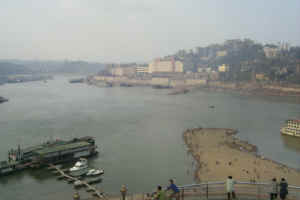 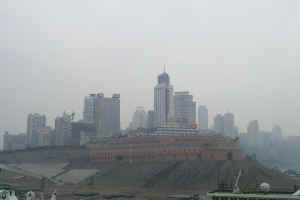
Chongquing is situated in the Sichuan province and the city is perched upon
the steep hills around the confluence of the Yangtze and Jialing Rivers. The
population of the city is 3 million with 14 million in the surrounding area. Due
to the huge economic force of this region, Chongquing enjoys a special city
status, like Shanghai and Beijing, which is directly under the control of the central
government.
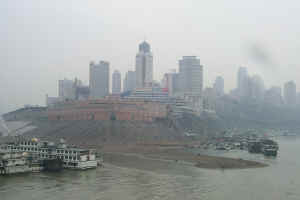 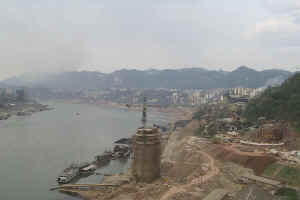
Historically Chongquing was the wartime capital of the Kuomintang from
1938-1945. The US and Chiang Kaishek signed a secret agreement to assist the
Chinese in their struggle (Kuomintang) against the communists during the
Cultural Revolution. Industrialization was initiated after the Japanese invasion
and refugees poured into this wartime city. Today it is a dusty
combination of tenant houses and skyscrapers.
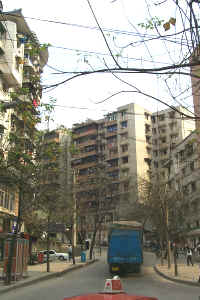 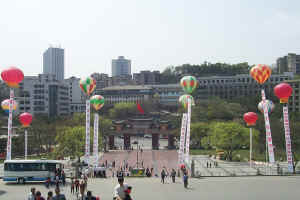
The weather is milder and summer in the city is known as one of the three
furnaces of China. It was warm and sunny for our visit.
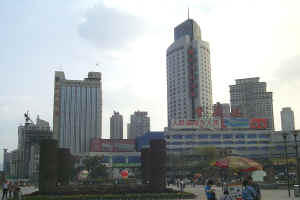
Our Saturday arrival meant that the silk factory was not on-line. But we were
able to walk through the building and see the process of softening the cocoons
and then pulling the single thread of the silk worm for the spinning the
thread.
We visit a contemporary art museum in the outskirts of the city and have some
of the famous Suchuan cuisine for lunch. Housing and suburbs are being
constructed everywhere visible in the country side surrounding the city.
There is definitely a stronger sense of capitalism and personal initiative here
then in the northern areas of China.
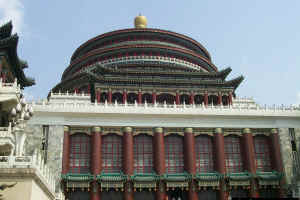 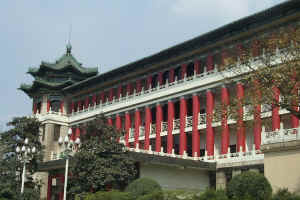
The center of the city is hilly and there is a distinct absence of bicycles.
Also cars are not allowed to honk in the inner city for purposes of noise
abatement. We visited the Renmin Hotel (1953) which is a palace comprised of
three wings separated by a an enormous circular concert hall that is 65 m high
and seats 4000 people.
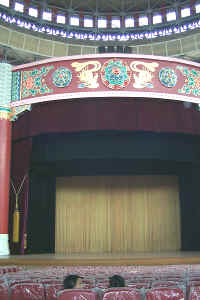
Our next stop was an indoor wet and dry market. We wander among live
fish bins, eel tubs, meat vendors, vegetables and bulk grains.
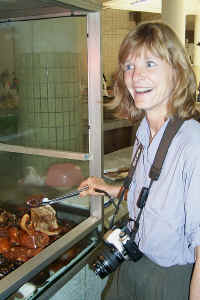 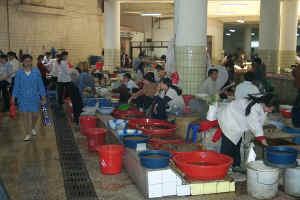
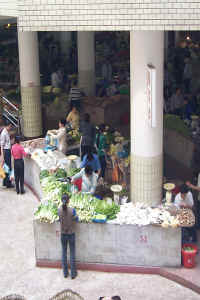 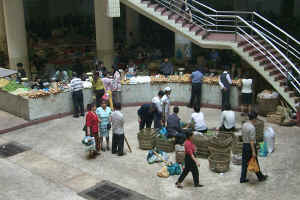
At the city's edge we drove down upon the river bed and watched people
selling and flying kites. Across the river are very industrial areas along
with traditional housing buildings interspersed.
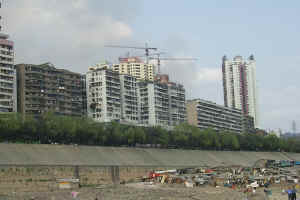 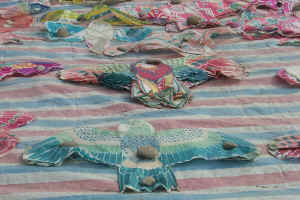
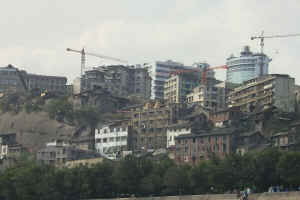 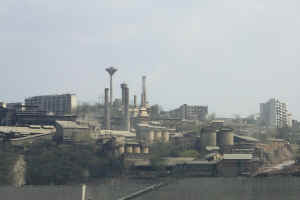
We crossed the river on our way to dinner. This gave us a different
perspective of the city.
 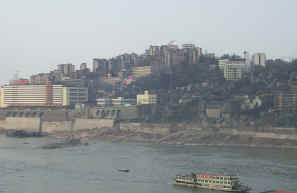
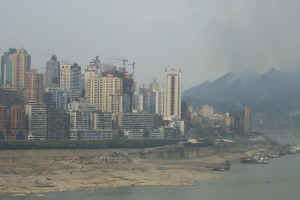 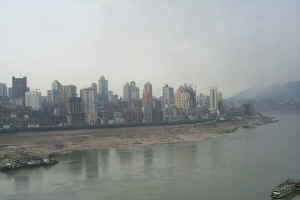
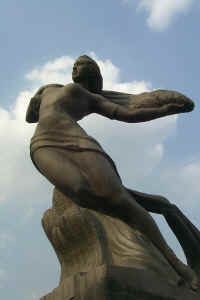 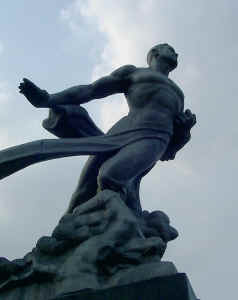
Dinner was a traditional hot pot feast. Hot pepper oils and boiling broth
were used to cook fresh fish, eel, vegetables, noodles, lotus roots, tripe, pork
brains, etc. It was our best Chinese meal to date.
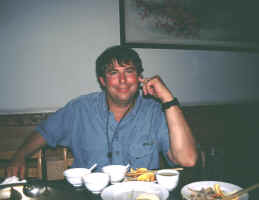
At 7pm we arrived at the dock of the Victoria Pearl, our cruise boat and home
for the next 4 days as we moved down the Yangtze River.
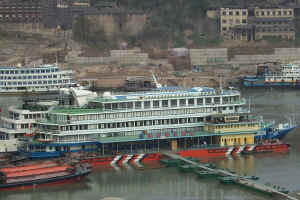
|